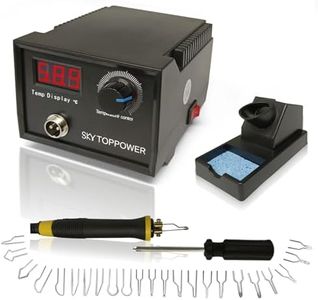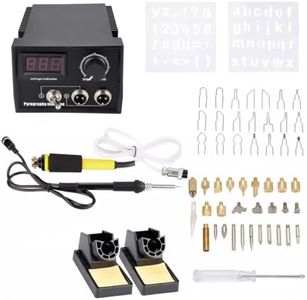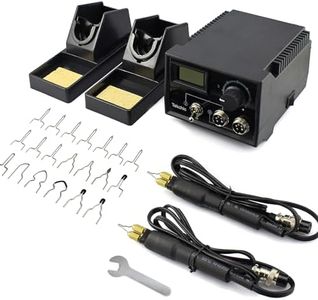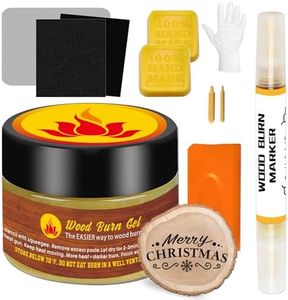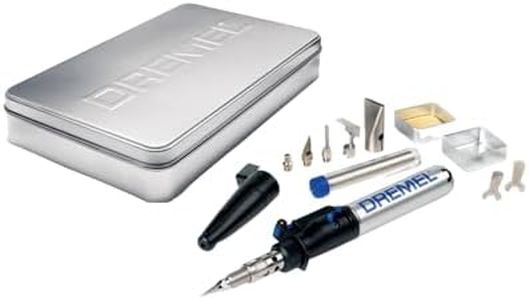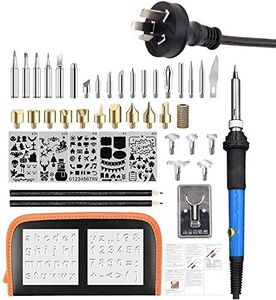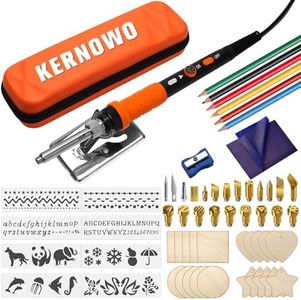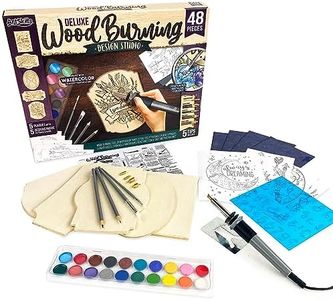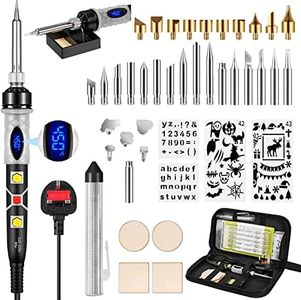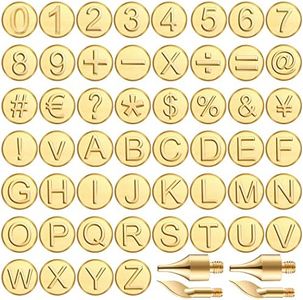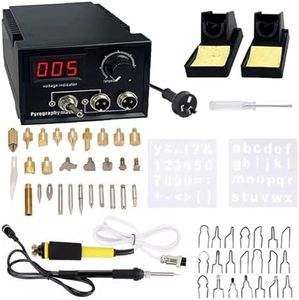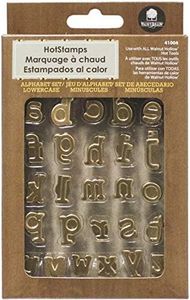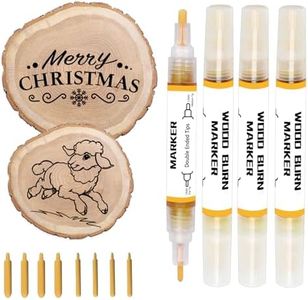We Use CookiesWe use cookies to enhance the security, performance,
functionality and for analytical and promotional activities. By continuing to browse this site you
are agreeing to our privacy policy
10 Best Wood Burning Tools
From leading brands and best sellers available on the web.By clicking on a link to a third party's website, log data is shared with that third party.
Buying Guide for the Best Wood Burning Tools
Choosing the right wood-burning tool is all about understanding what projects you want to tackle and matching your needs with the features available. Whether you’re just experimenting with pyrography or looking to create detailed, professional artwork, there are a few main factors that will shape your experience. A good fit will help you get clean lines, stay comfortable while you work, and enjoy the craft.Tip VarietyTip variety refers to the number and types of interchangeable tips that come with or are compatible with the tool. Different tips let you create various lines, textures, and shading effects. If you plan on simple designs or lettering, a few basic tips are enough. For detailed art, shading, or texture, a wider selection gives you more creative options. Consider the kinds of marks and details you want in your work, and choose a tool that supports those needs with the right range of tips.
Temperature ControlTemperature control is the ability to adjust how hot your tool gets. This is important because different woods and different tip styles work best at different temperatures. Some tools have fixed heat, which is fine for basic work on soft woods, while more advanced tools offer adjustable dials or digital controls for more precision. If you’re working on various wood types or want to create both fine lines and deep burns, having adjustable temperature lets you tailor the tool's performance to your specific project.
Heating TimeHeating time is how quickly the tool gets up to its working temperature. Shorter heating times let you start your project sooner and keep the creative flow, while slower tools might make you wait several minutes. If you’re often doing quick or impromptu projects, faster heating is a practical advantage. However, for occasional or patient users, this may be less of a concern.
ErgonomicsErgonomics refers to how comfortable the tool is to hold and use for long periods. Since wood burning can take time and require careful control, a lightweight handle with a comfortable grip is key to avoiding hand fatigue and keeping your lines steady. If you expect to work on large or detailed pieces, pay attention to grip shape, tool weight, and any included heat-resistant coverings. Try to imagine holding the tool for your longest planned session to judge what will be most comfortable for you.
Power SourcePower source covers whether the tool is corded (plug-in) or battery-powered. Corded tools usually offer steady power and heat for long sessions, while battery-powered tools offer flexibility and are handy for outdoor use or where outlets are limited. Think about where you’ll most often use your tool—at a fixed workspace or in varied locations—and choose the power method that fits your routine.
Safety FeaturesSafety features include anything that helps protect you or your surfaces from accidental burns, such as heat shields, on/off switches, or stands. Since the tips get extremely hot, these features are especially important if you’re new to wood burning or plan to work in a space where others may be present. Look for built-in stands and a clearly marked on/off switch, and think about who else may have access to the tool when not in use.
Included AccessoriesIncluded accessories can range from extra tips, cases, stencils, to cleaning supplies. More accessories can give you a head start if you’re a beginner or want to experiment without buying lots of extras. Consider what’s in the box and think about whether those accessories match the style and type of projects you want to do, or if you’d prefer to pick out specialized add-ons separately as you grow.
